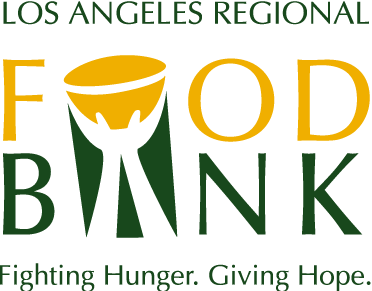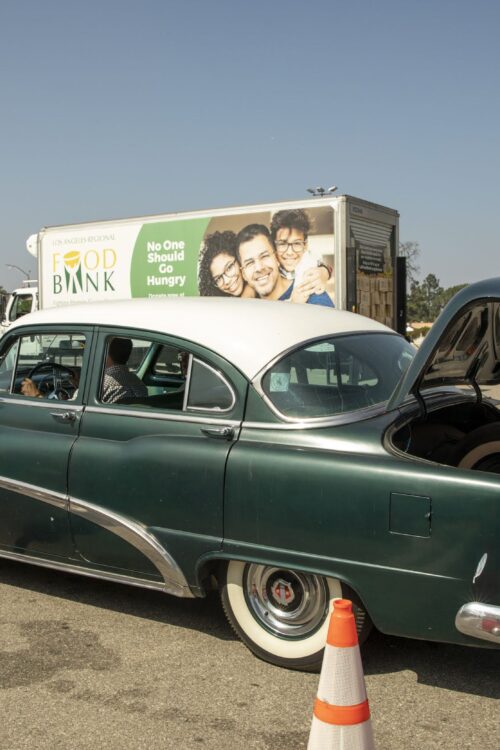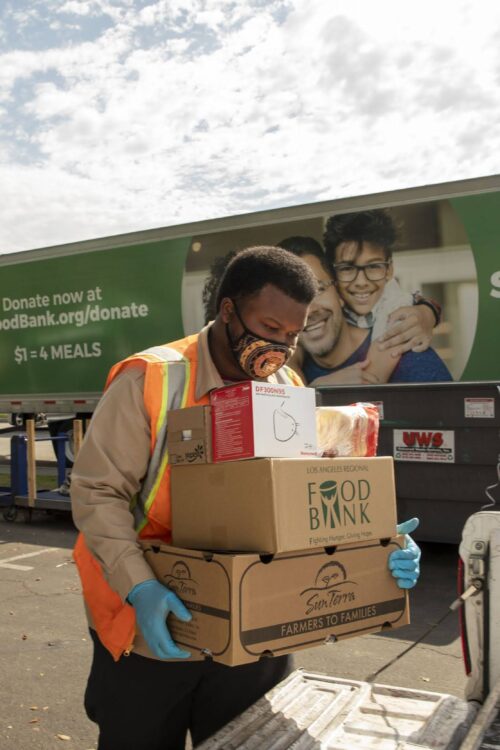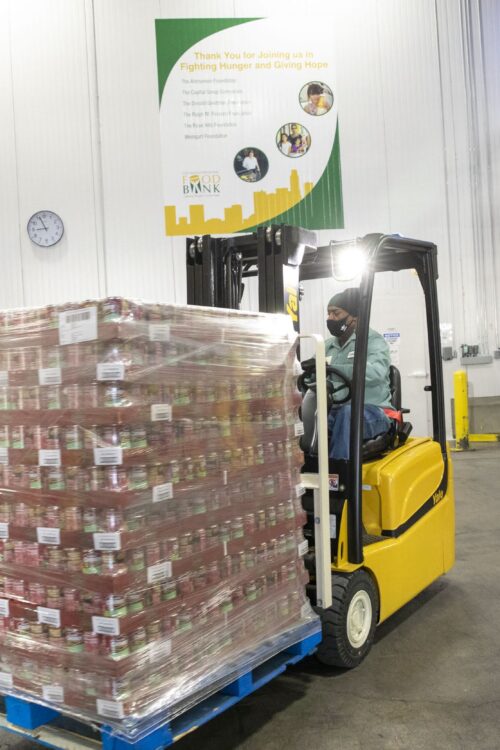2022 Impact Report
Thanks to your support in 2022, the Los Angeles Regional Food Bank and our partner agencies were able to provide food to
800,000 People
each month.
2022 Philanthropic Impact Report
With your generous support, in 2022, the Los Angeles Regional Food Bank provided 110 million pounds of food and other products to at-risk children, seniors, adults and families in Los Angeles County. Participants received enough nutritious food for approximately 88 million meals. A generous $25,000 donation provided the equivalent of 100,000 meals, significantly improving the lives of the most vulnerable members of our community.
Your support for the Food Bank is critical.
Thank you for making a difference for people throughout LA County who struggle with food insecurity.
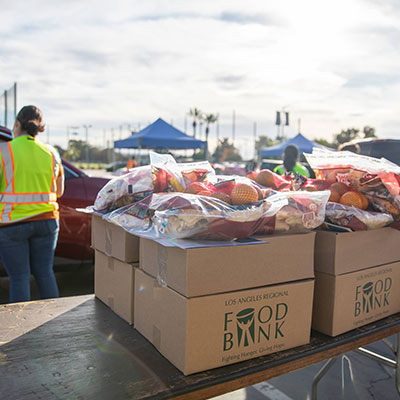
40,891
Financial
Donors
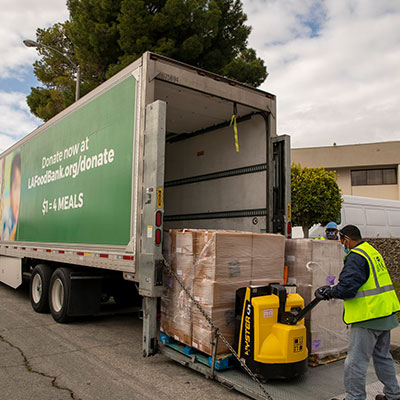
110 million
pounds of food and Product distributed
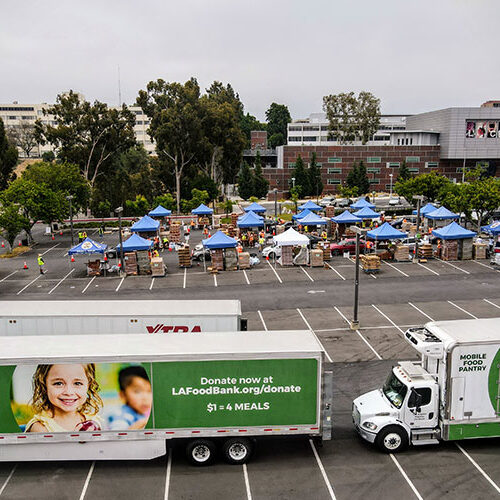
91 million
Meals provided to those in need
$25 = 100 Meals
Each $25 donated helped provide 100 meals to children, seniors, individuals and families throughout Los Angeles County.
Your participation allowed the Food Bank and our partner agencies to provide nutritious food to people throughout Los Angeles County and support families struggling with food insecurity in 2022.
To see the impact of your gifts, please visit LAFoodBank.org/stories >
With your support, the Food Bank achieved the following outcomes in 2022:
The CalFresh Outreach Program helped eligible low-income individuals and families gain access to nutritious food through the California Department of Social Services CalFresh Program. We assisted clients in submitting 2,518 CalFresh applications.
We conducted Mobile Food Pantry distributions in accessible locations across Los Angeles County, including Drive-Through Food Distributions that served thousands of households. In total, the Mobile Food Pantry Program distributed 11 million pounds of nutritious food to over 330,000 people, enough for approximately 9 million meals.
The Extra Helpings Program rescued millions of pounds of food that would otherwise go to waste and distributed it to those in need. In 2022, Extra Helpings connected 165 partner agencies to donated food from 500 local donors, such as grocery stores, restaurants and bakeries. Agencies rescued 22.5 million pounds of food for distribution to those in need.
We increased access to nutritious food in underserved communities by supplying food and products to our network of more than 600 partner agencies. Our partners include food pantries, soup kitchens, senior centers, youth centers, homeless shelters, faith-based organizations, and community colleges, among others. In addition to food, we distributed 5 million pounds of essential items such as diapers and hygiene products, helping participants meet their basic needs.
The Nutrition Education Program promoted healthy eating and lifestyle choices through engaging classes, activities and outreach. The Food Bank’s Health Educators conducted live online recipe demonstrations and nutrition classes attended by 358 pantry participants. In addition to live classes, we recorded 12 recipe videos in English and Spanish featuring simple, healthy ingredients. The videos are available on the Food Bank’s YouTube channel.
Children's Nutrition Programs
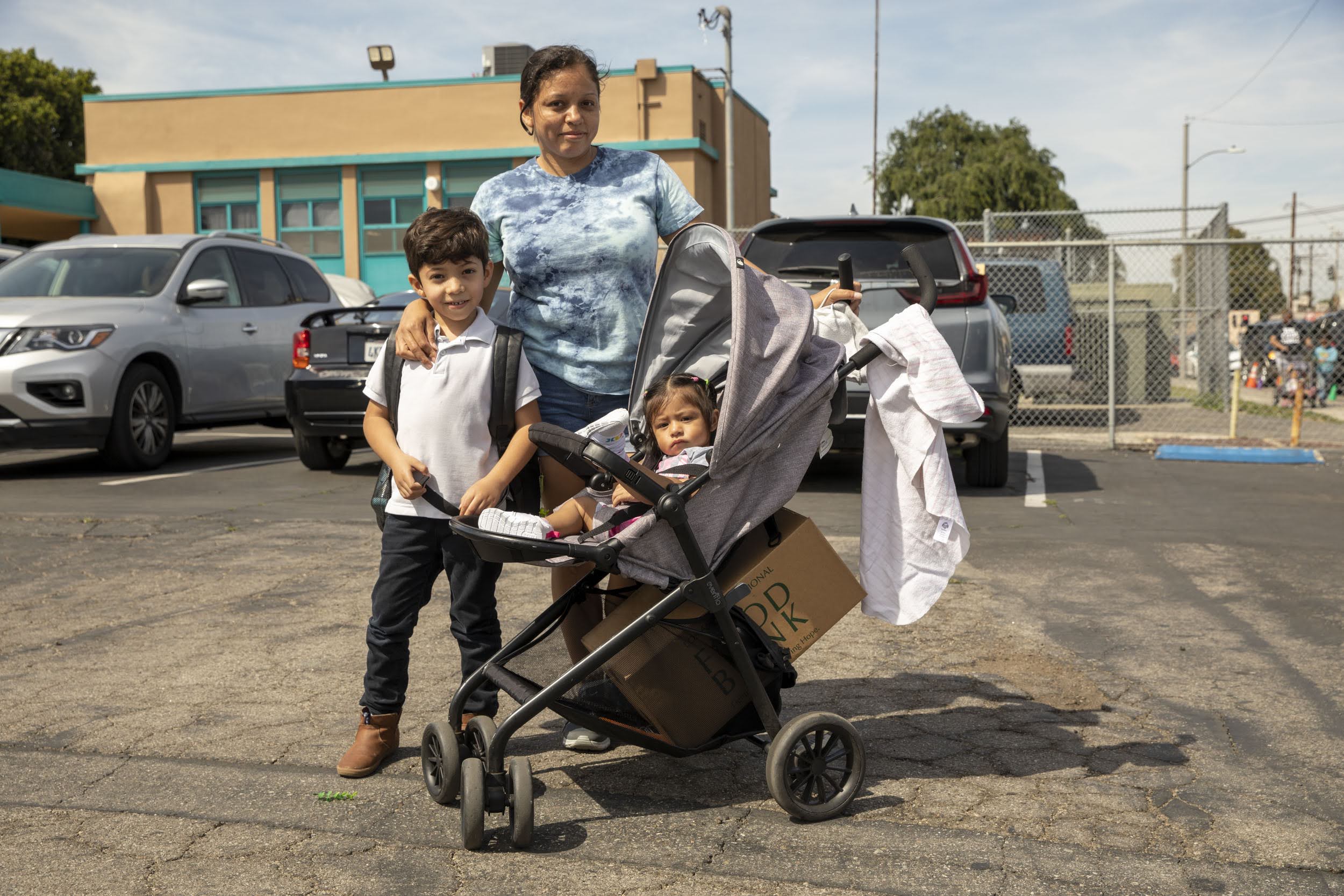
Program Snapshot:
In 2022, the Food Bank provided healthy breakfasts, after-school meals, lunches, grocery kits and fresh produce to 8,508 food-insecure children at more than 75 sites throughout Los Angeles County.
Our Children’s Nutrition Programs included:
The Afterschool Meal and Summer Lunch Programs distributed more than 189,000 prepared meals to children in need, including healthy breakfasts, lunches, and after-school meals.
The BackPack Program provided grocery kits containing 355,442 pounds of nutritious food to at-risk children at high-need schools in the Los Angeles and Compton Unified School Districts.
The Children’s Breakfast Program distributed kits containing 324,435 pounds of healthy breakfast foods such as oatmeal, pancake mix, and dried fruit.
Client Voices
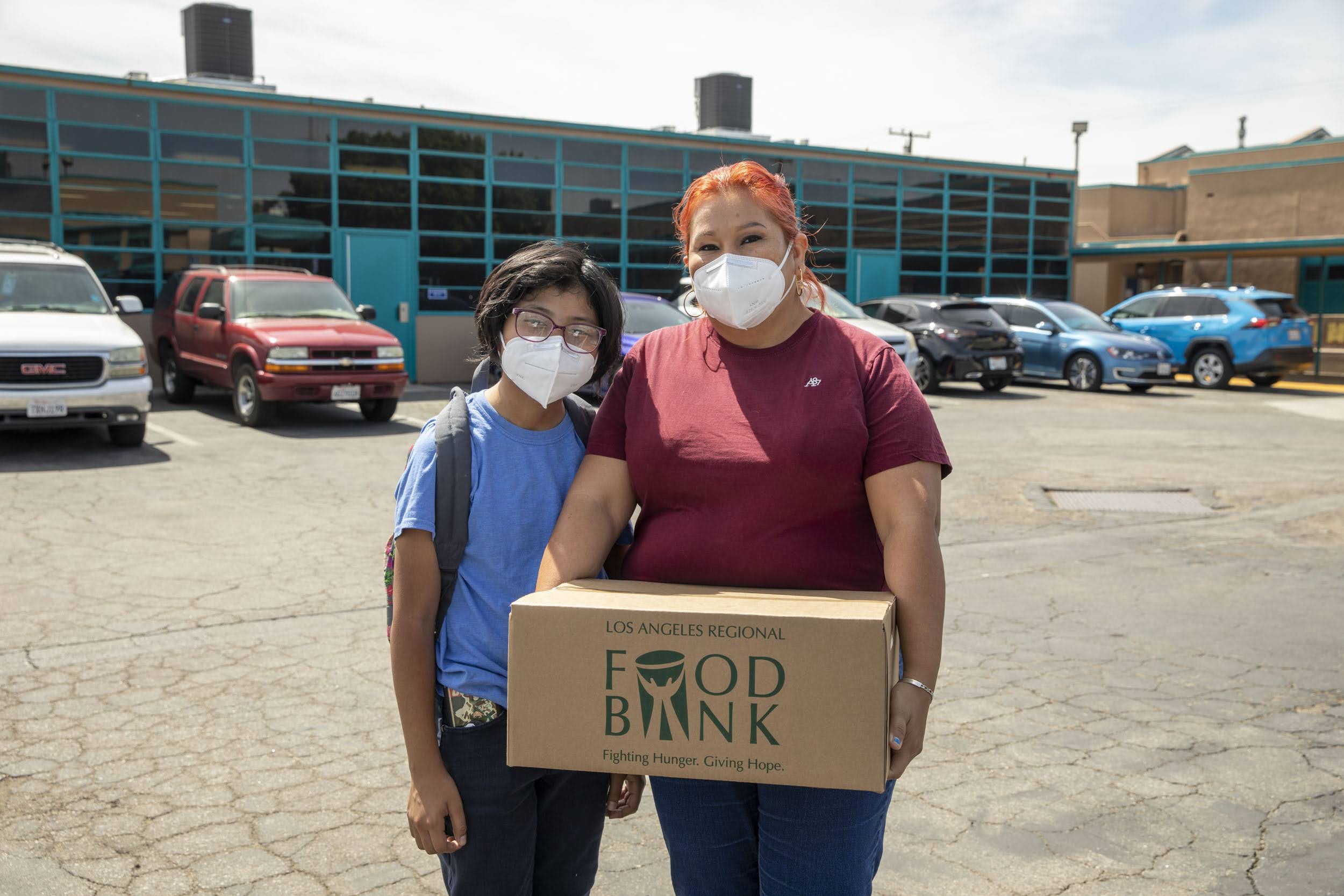 Inflation has worsened the challenges faced by low-income, and now middle-income, families, leaving many unable to afford basic grocery items, rent and utilities. In response, the Food Bank expanded operations to serve more than 800,000 people each month in 2022. Patricia is a mother of four. Unfortunately, her daughter was diagnosed with cancer as a young child and lost mobility, forcing her to leave her job to become her caretaker. Because of her condition, her daughter has a restrictive diet: At a recent food distribution, a participant named Jacqueline shared her experience: “The doctor suggested my daughter eat quinoa instead of rice, but quinoa is so expensive! He gave me something to think about.”
Inflation has worsened the challenges faced by low-income, and now middle-income, families, leaving many unable to afford basic grocery items, rent and utilities. In response, the Food Bank expanded operations to serve more than 800,000 people each month in 2022. Patricia is a mother of four. Unfortunately, her daughter was diagnosed with cancer as a young child and lost mobility, forcing her to leave her job to become her caretaker. Because of her condition, her daughter has a restrictive diet: At a recent food distribution, a participant named Jacqueline shared her experience: “The doctor suggested my daughter eat quinoa instead of rice, but quinoa is so expensive! He gave me something to think about.”
Fortunately, Patricia and her family are part of the BackPack Program, receiving healthy and nutritious food for the family, including quinoa! Patricia told us: “I appreciate all the help you’ve given. You help people like me, because I know I’m not the only person in need.”
Senior Nutrition Programs
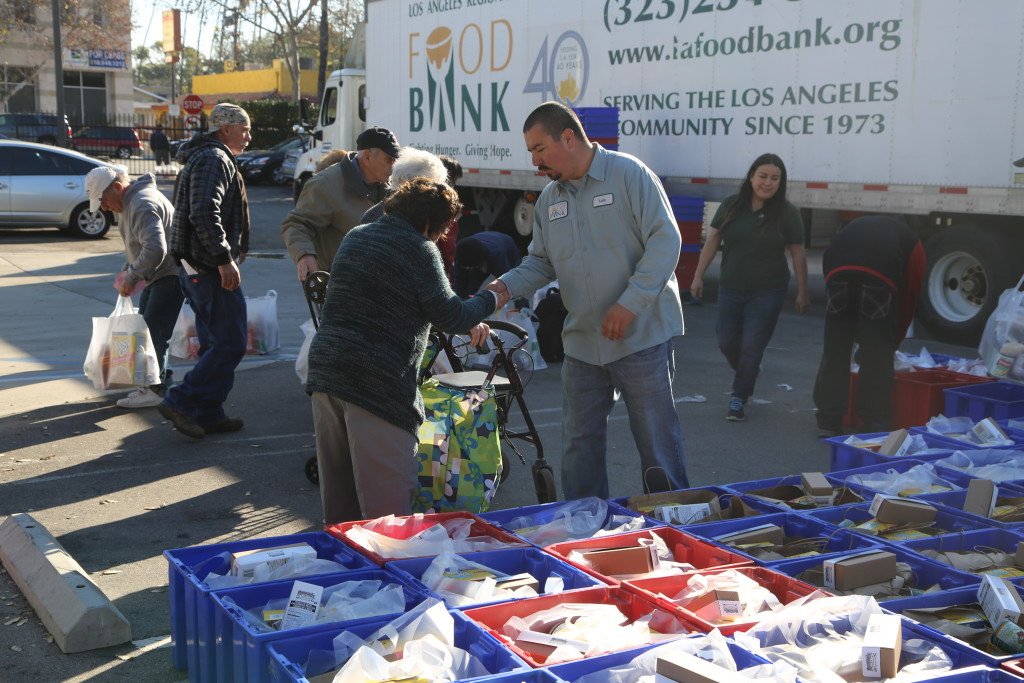
Program Snapshot:
In 2022, the Food Bank’s Senior Nutrition Programs distributed 10.4 million pounds of nutritious food to more than 29,000 low-income seniors and vulnerable older adults each month across Los Angeles County.
Program Activities Included:
Delivering groceries directly to the homes of food-insecure seniors, with help from delivery partners as well as our own vehicles and drivers.
Providing food to over 100 senior-focused partner agencies, including senior centers and senior housing sites. In addition to supplying food, we supported our partner agencies with equipment such as cold storage, expanding agencies’ capacity to help more seniors in need over the years to come.
Client Voices
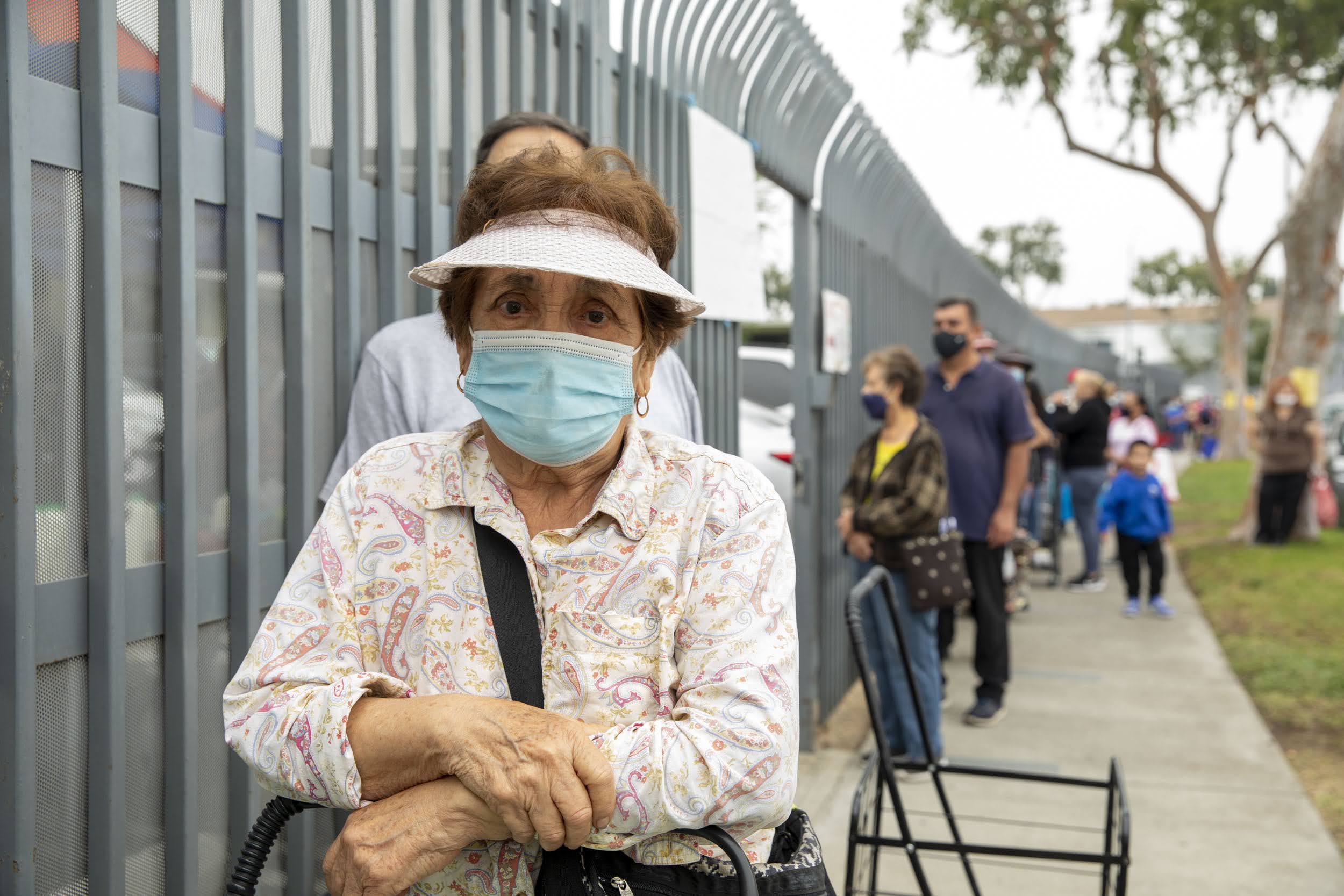
Maria is one of the thousands of seniors who receive nutritious food from the Food Bank. She shared her experience with us during a recent food distribution. “This is of huge help, and moreso every day because things are harder every day, everything is more expensive,” she told us.
“I get emotional knowing there are people that care.” Thanks to support from partners like you, Maria has access to the nutritious food she needs to maintain her health and lead an active lifestyle while avoiding hunger.
Spotlight on Nutrition
Across our programs, the Food Bank prioritizes providing nutritious food to our participants, including items like whole grains, fresh fruits and vegetables, dairy and lean proteins.
20%
Fresh Produce
In 2022, one-fifth of the food distributed was fresh produce.
96%
Nutritious Food
A majority of the food we distributed was rated as nutritious according to the USDA-based nutrition ranking system CHOP (Choose Healthy Options Program).
26 M
Pounds of Food
Over 26 million pounds of fresh produce was distributed through our direct programs and our partner agencies, providing families and individuals access to this critical source of nutrition.
From being food-insecure to helping those in need,
Citrus College Dean of Students Maryann Tolano-Leveque is passionate about helping students who face food insecurity. As someone who remembers receiving food assistance growing up, she knows firsthand how important these programs are.
Read Maryann's Story
“Food insecurity is a really big issue for students at community colleges and even at 4-year institutions,” she said.
“We provide food assistance programs in K-12 settings, but for some reason, we don’t think about these programs in higher education, even though they are still needed.”
Thanks to donors like you, college students and their families can have healthy, balanced diets.
Update:
The Building Hope Campaign
The Food Bank has EXCEEDED ITS GOAL OF RAISING $165 million through our comprehensive Building Hope Campaign, MEETING THE GOAL ONE YEAR EARLY.
To increase our distribution, we have purchased new trucks, hired new warehouse and programs team members, and increased our direct food distribution, including home delivery for our most vulnerable clients. We have also purchased a 256,000 square-foot facility located in the City of Industry to accommodate this increase in volume.
We are now renovating the building to create a state-of-the-art food distribution center. We are currently in the second phase of the building improvements, which include:
Phase 1:
Ambient Storage Racking and Warehouse Improvements
Phase 2:
Volunteer Center, Production Kit and Food Rescue Areas, and Conference Center
Phase 3:
Cooler, Freezer, and Cold Dock
Phase 4:
Solar and Sustainability
Los Angeles County is home to more than two million food-insecure individuals and families. The completion of these renovations will significantly increase the Food Bank’s distribution capacity and our efficiency, expanding our reach and advancing our vision that no one goes hungry in our community.
To discuss the Building Hope Campaign or schedule a virtual or in-person tour of the new facility, please contact Chief Development Officer Roger Castle at (323) 234-3030 x147 or rcastle@lafoodbank.org.
Thank You
The Food Bank deeply appreciates your partnership and support for our work to fight hunger in Los Angeles County. Your generosity enables the Food Bank to provide nutritious food to thousands of people in need every day, dramatically improving the lives of those facing hunger. On behalf of the children, seniors, adults and families we serve, thank you for partnering with the Food Bank to create a hunger-free community.
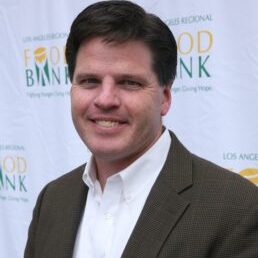
“Despite a lower unemployment rate in LA County, the impact of inflation put significant pressure on the people and families we served in 2022 pushing many into a situation of needing food assistance.”
— Michael Flood, President and CEO of the Los Angeles Regional Food Bank

